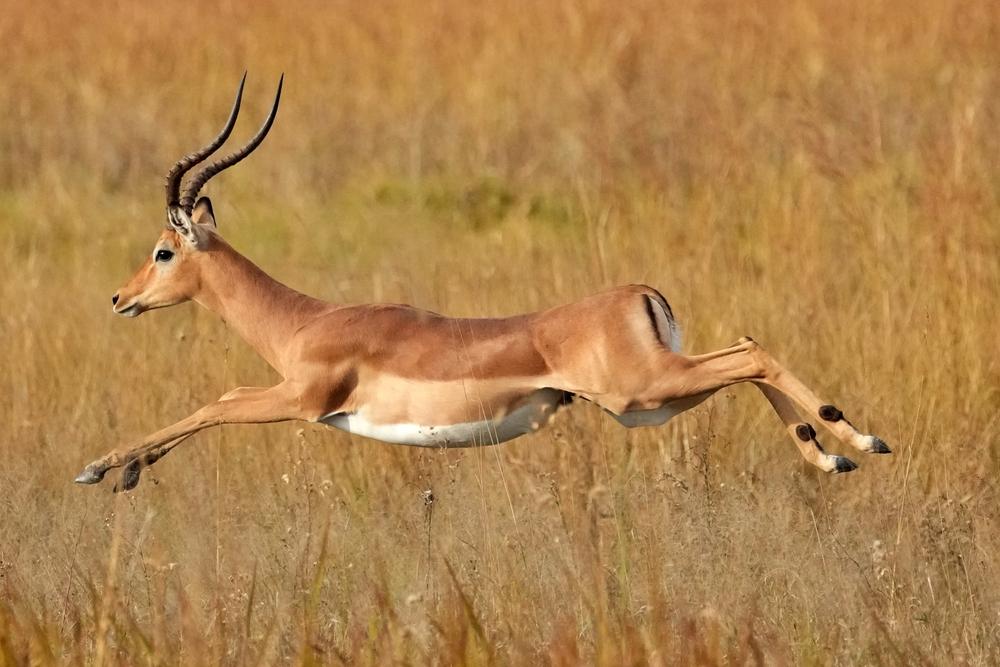

No game hunting safari is complete without targeting an impala. Impala and African hunts go together like peanut butter and jelly, and this medium-sized antelope is just as common as your favorite snack! Impala are found from southern Africa to the northern part of eastern Africa. Their conservation status with the IUCN is “least concern.”
They live in habitats of woodlands with some trees, grasslands, and savannas. The best impala hunting grounds in South Africa are the Limpopo and the Eastern Cape provinces.
There are three types of impala:
Of the three, the black-faced impala is the most common and is endemic to various African countries, including Tanzania, Mozambique, Zimbabwe, Zambia, Malawi, Swaziland, Botswana, Namibia, Angola, and South Africa. They live in herds that range from only a few members to hundreds of impalas. Ewes and their fawns live in herds with one dominant ram, while young rams live in bachelor herds.
The peak of the rut runs between the full moons in May, with females gestating for 6-7 months and giving birth to one fawn. The young fawn will stay close to its mother for 4-6 months, after which it is weaned. Males leave and join a bachelor herd, while females remain with the herd.
The impala is on the menu for numerous predators, including cheetahs, lions, hyenas, and leopards. Pythons prey on the younger, helpless fawns.
Name:
Aepyceros Melampus
Male Weight:
143-176 pounds
Male Shoulder Height:
30-35 inches
Horns:
Male only
Gestation Period:
6-7 months
Life span:
12-15 years
The Impala is a Frequent Addition to African Plains Game Hunts.
Should this be your first impala on an African hunt, look for a medium-sized antelope with a reddish-brown coat and a white underbelly. A narrow black line runs along the middle of its lower back to the tail, and a vertical black stripe is found on the back of each thigh. Only males have horns that grow to 15-35 inches in length. Impalas usually have a short, light-brown coat on their back and flanks, with a white underbelly.
There are several techniques used to target impala on a game hunting safari. One technique, should it be legal, is to build a blind overlooking a water hole and target them from there. An alternate option is to stalk the herd when they are most active and grazing in the early morning or late afternoon. It is, however, quite tough to get within shooting range with so many sets of eyes and ears on alert.
You need to bring your A-game for this African hunting adventure! Hunting impala can be challenging due to the animal’s astute hearing, keen sense of smell, and their excellent eyesight. You must take it very slowly and use all possible camouflage techniques to get within shooting range. Impala also group when alarmed or nervous. This grouping can make it difficult to target one animal, and a bullet may pass through your trophy completely and hit another. Should they sense danger and an alarm is raised, they will head for dense cover, which also challenges the hunter.
Should it be legal, a .22 caliber could be used. With this size caliber there is no margin for error and shot placement on a hunting safari is critical. If you do not want to spend the entire day tracking a wounded Impala, a 7mm to the 30 calibers would be a better option.
Search from our range of Hunts across various popular destinations in Africa.
Find A Hunt